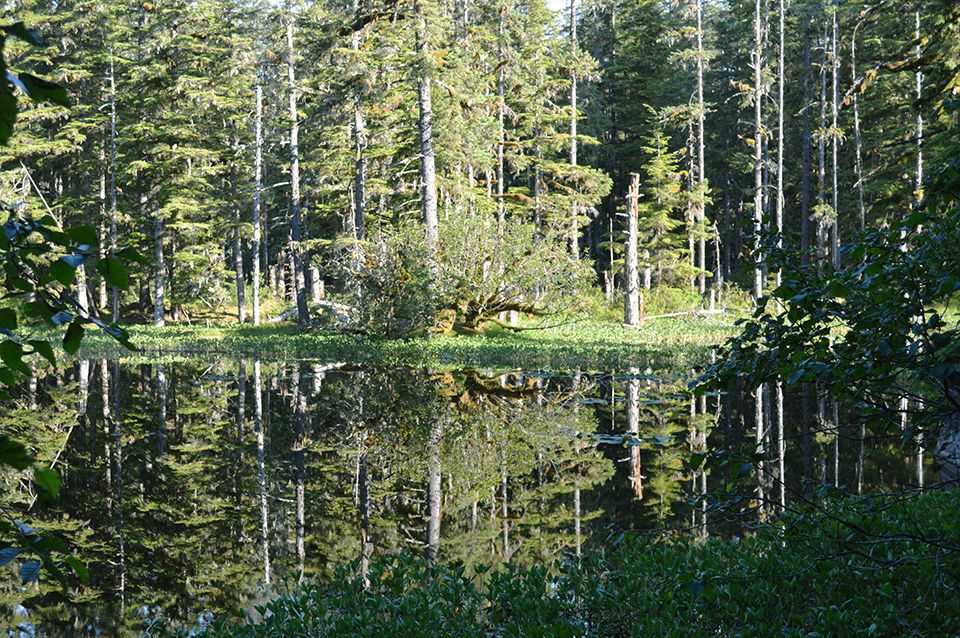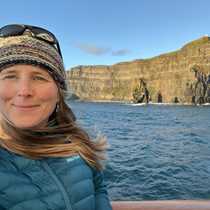For many aboard, this morning started a little earlier than usual with a pre-breakfast hike at Bartlett Cove. Everyone that had set their alarms enjoyed the hike through the ‘young’ 200-year-old trees, snags, and undergrowth. The trail winds along the shore before diving deep into the spruce and hemlock forest, towering over a diverse understory of mosses, orchids, lichen and fungi. Imaginations were led astray with thoughts of horsetail rush towering over dinosaurs in times past. The skeleton on display along the interpretive trail gave guests a real perspective of just how large the humpbacks are that we’ve been seeing during our voyage. We also got the opportunity to visit the long house – a ceremonial building for the native people who now work in partnership with the National Park Service.
Back on board, sleepy heads and hikers alike enjoyed the first of several meals that would be enjoyed throughout the day, along with introductions to Mary and Jake, our native voice interpreter and park ranger. The rest of the day filled many with awe and wonder. We passed close to South Marble Rock, but the smell of the Steller sea lion colony made us glad that we were keeping our distance! Several otters were frolicking in the water, and many guests were able to check off both the tufted and horned puffins from their wish list. Shutters clicked ferociously as keen photographers tried to capture birds in flight or on the water before they ducked out of view.
We continued cruising north into the park, alternating between looking out for humpback whale spouts, and learning about the natural and cultural history of the area. Our destination for the day was the northern end of Glacier Bay where the Margerie and Grand Pacific Glaciers terminate. The Grand Pacific Glacier looks like an inactive slope of debris, while the Margerie Glacier is clearly active with overhanging blue ice towers that look ready to topple at any minute, and glacial rivers gushing from underneath. Young explorers completing their junior park ranger program looked for abstract shapes among the icebergs. The highlight of the return leg was spotting several mountain goats perched precariously on Gloomy Knob (so named by John Muir). Several nanny goats were out in the sunshine with their kids. The main time for berthing young is May, so these youngsters were likely only one month old.







